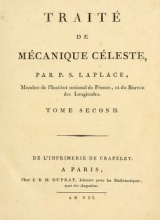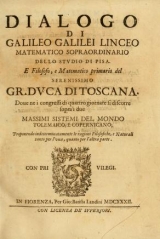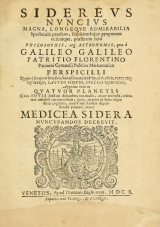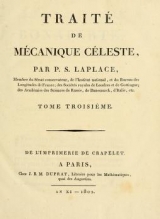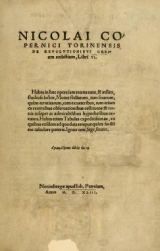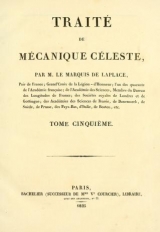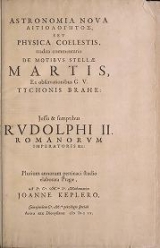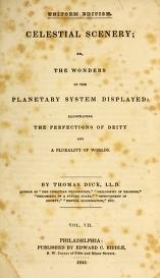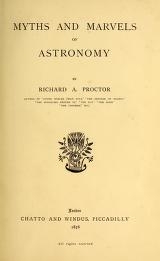Tycho Brahe1 (1546-1601) was a Danish astronomer who built the best observatory in Europe and set a new standard for accurate celestial observations in the era before the invention of the telescope. Tycho had the advantage of being born into one of the most important noble families of Denmark. Raised by his uncle, Tycho managed to avoid the usual custom of becoming a courtier or armed knight, ending up in the service of the King. Instead, Tycho pursued his true interests in the humanities and the sciences, particularly astronomy.
Tycho became quite adept at designing scientific instruments and making observations during his early travels in Europe. Upon his return to Denmark he quickly fell into favor with King Frederick II who provided Tycho with the monetary support he needed to continue his astronomical researches. In 1576, the King gave him the small island of Hven2 in the Danish straits, and Tycho quickly began construction of his observatory complex. For his observatory, he designed massive instruments with which he hoped to obtain the most accurate observations ever. In the days before the invention of the telescope, all astronomical observations had to be made with the naked eye. This limited the possible observational accuracy, and few astronomers ever achieved even adequate results due to poor instruments. Tycho believed that if he could construct large stable instruments that were precise, easily readable, and used with painstaking care, he could provide the world with the observations it needed to finally uncover the true nature of the universe3.
Even before his observatory was complete, Tycho made his first observations at Hven on his thirtieth birthday, December 14, 1576. As construction continued, Tycho maintained his observing program as weather allowed. He was aided by a number of assistants who were necessary for observing with the large instruments, and the more mathematically skilled ones would work on the mathematical analysis of the collected data. While on Hven, Tycho concentrated primarily on obtaining accurate positions of the stars and on observing the Sun, Moon, and planets in order to get the most precise understanding to date of their orbits and motions. Before he could bring his observing program to completion, events took a turn for the worse for Tycho. In 1588, King Frederick died and Tycho found that he did not enjoy the same favor among the new regents. By the time the new King, Christian IV, was crowned in 1596, it was only too clear that the royal court would no longer smile upon Tycho's lavish expenditures. Tycho decided it was time to see if he could continue his work elsewhere, so he packed up his household and in 1597 left Hven and headed for northern Germany.
Tycho found a friend in the wealthy Heinrich Rantzov who allowed him to stay at his estate in Wandesbeck, outside Hamburg. At this time, Tycho decided it was now time to complete a project he had been working on since the 1580s: theAstronomiæ instauratæ mechanica. The Mechanica was originally meant to be a showcase of Tycho's instruments, highlighting their superiority and how they would provide the measurements which would lead to "restored astronomy." Now theMechanica would also serve as his resume, which he would dedicate to the Holy Roman Emperor, Rudolf II, in hopes of gaining his patronage.
The Mechanica begins with a dedication to Rudolf and is followed by a poem to Tycho by his good friend Holger Rosenkrantz. Next are twenty-one illustrations of his astronomical instruments and their corresponding descriptions (originally, Tycho had planned for eighteen woodcut illustrations, but decided to include four new engravings of other instruments he thought worthy of mention). After two pages of brief descriptions of other instruments, the twenty-second instrument (the great brass globe) is described and followed by a description of Tycho's astronomical accomplishments, some correspondence, another poem, and other miscellaneous material. Tycho then includes an appendix describing his observatory facilities at Hven including some woodcuts. The work then closes with a supplement on the measuring scales and sights of his instruments, a final glorious poem, and the printing information. The printing of the Mechanica was undertaken by a Hamburg printer, Philip von Ohrs, at Wandesbeck using Tycho's own printing press, and the book was completed in January 1598. Less than one hundred copies were made as Tycho planned to distribute them himself as gifts to various rulers and nobles he encountered during his search for patronage. The book, as one would expect for such a purpose, was well made with fine paper and profusely hand colored. The only difference in content between the 1598 edition and the one of 1602 is that the latter includes a portrait of Tycho bound in place of the vignette on the first edition's title page (although a few of the 1598 copies did have a different watercolor portrait pasted on the back of the title page).
Tycho's search for patronage did finally pay off, as Rudolf enthusiastically took Tycho into his favor and in 1598 provided him with a castle near Prague to continue his astronomical work. Tycho's work was cut short by his death in 1601, and it was left to his assistants to continue his work. Johann Kepler saw to the printing of Tycho's long-delayedAstronomiæ instauratæ progymnasmata [Introductory exercises toward the restoration of astronomy] in 1602 and continued working on the problem of the orbit of Mars. Thanks to the precision of Tycho's measurements, Kepler discovered the first two laws of planetary motion and that the Martian orbit was elliptical, not circular as previously believed. He published these important discoveries in his Astronomia nova [New astronomy] of 1609. Kepler also used Tycho's observations to produce his new set of planetary tables which he published in 1627 as the Tabulae Rudolphinae [Rudolphine tables].
The donor
The Smithsonian Institution Libraries' copy of Astronomiæ instauratæ mechanica was part of Bern Dibner's Burndy Library. Bern Dibner (1897-1988) was an electrical engineer, book collector, and philanthropist. Born in the country now known as Ukraine, Dibner immigrated to the United States in 1904 and settled with his family in New York City. He graduated from the Polytechnic Institute of Brooklyn in 1921 and embarked on a career in electrical engineering which led to his patenting a number of inventions and his founding of the Burndy Engineering Company in 1924. Dibner, who was fascinated by both art and technology, found great pleasure in studying Leonardo da Vinci. This interest led him obtain a small library (eventually called the Burndy Library) of works about da Vinci which grew over the years as Dibner's interests expanded into the history of electricity, the history of Renaissance technology, and finally the history of science & technology in general. His collection continued to grow, and in 1941 he formally set up the Burndy Library as a separate institution "to advance scholarship in the history of science." By 1964, Dibner's collection totaled over forty thousand volumes and he opened a new building in Norwalk, Connecticut, to house the library more appropriately. In 1974 Bern Dibner donated one-quarter of the Burndy Library's holdings to the Smithsonian Institution to form the nucleus of a research library in the history of science and technology to be located in the young (established 1964) National Museum of History and Technology (now the National Museum of American History). The library opened its doors in 1976 as the Dibner Library of the History of Science and Technology, the first rare book library of the Smithsonian Institution Libraries.
Tycho Brahe. Astronomiæ instauratæ mechanica [Instruments for the restoration of astronomy]. Noribergae [Nürnberg]: apud L. Hvlsivm [by Levinus Hulsius], 1602. 107 unnumbered pages, woodcut and engraved illustrations, map, plans.
Collation: )::(4 A-E6 F4 G-H6 I4 [E4 signed F4].
Cover: Contemporary vellum, 32.5 x 20.5 cm.
Call number: q QB85.B7 1602.
This edition is the first trade edition of the Mechanica (as the book is commonly known). The work was originally printed privately for Tycho Brahe in 1598 by the Hamburg printer Philip von Ohrs on Tycho's printing press at the castle of Wandsbeck. The 1598 edition was meant for private distribution only and very few copies were made (probably between 60 and 100). After Tycho's death in 1601, it appears that his heirs sold the Mechanica's woodcuts and copper-plate engravings to the Nürnberg writer and printer Levinus Hulsius. Hulsius printed his edition in 1602 and it is very similar to the 1598 edition except that he did not use as fine a paper, the margins are smaller, and the pages do not have the fine border around the text and illustrations. In addition, most of the 1598 copies were hand-colored prior to distribution.
The 1598 edition was reprinted in a black-and-white facsimile in Stockholm in 1901 with an introduction (in Latin) by Bernhard Hasselberg. A new printing was made for an edition of Tycho's complete works, the Opera omnia, edited by John L. E. Dreyer and published in Copenhagen between 1913 and 1929, with the Mechanica appearing in volume 5. An English translation of most of the Mechanica was printed in Copenhagen in 1946 as Tycho Brahe's description of his instruments and scientific work, translated and edited by Hans Raeder, Elis Strömgren, and Bengt Strömgren.
Ronald Brashear
Curator of Science and Technology Rare Books
Special Collections Department
Smithsonian Institution Libraries
May 1999
-
Dreyer, J. L. E. Tycho Brahe. New York: Dover Publications, 1963.
-
Hellman, C. Doris. "Tycho Brahe," in Dictionary of Scientific Biography, edited by Charles Coulston Gillisipie, vol. 2, pp. 401-416. New York: Charles Scribner's Sons, 1970.
-
Thoren, Victor E. The Lord of Uraniborg. A Biography of Tycho Brahe. Cambridge: Cambridge University Press, 1990.
-
Tycho Brahe's Description of his instruments and Scientific Work As Given in Astronomiae Instauratae Mechanica (Wandesburgi 1598). Translated and edited by Hans Ræder, Elis Strömgren, and Bengt Strömgren. Copenhagen: I Kommission hos Ejnar Munksgaard, 1946.
-







